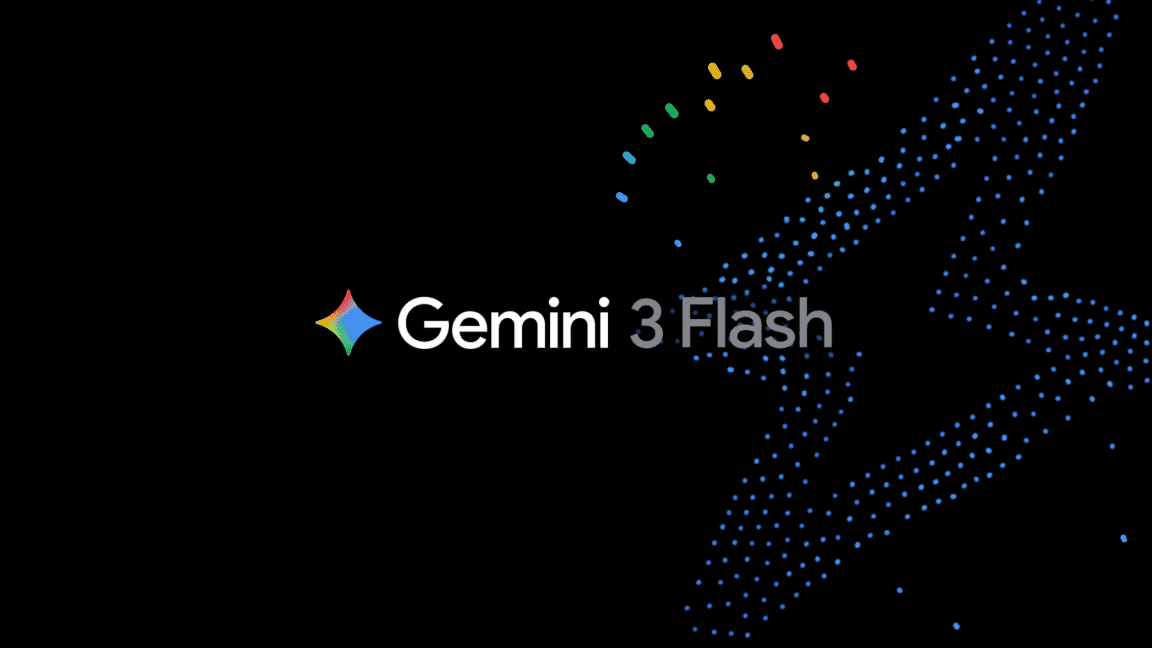Luma AI Unveils Photon: A Revolutionary AI Image and Video Generation Platform
4 Sources
4 Sources
[1]
Luma AI updates Dream Machine with new Photon image generation model and more - SiliconANGLE
Artificial intelligence startup Luma AI Inc. today announced the debut of a powerful new model for image generation that's available now through its popular Luma AI Dream Machine platform for creators and marketers. The AI startup, which provides tools for creating and generating images and videos using simple, text-based prompts, also said it's launching Dream Machine on the web and on Apple Inc. iOS devices, with a limited free service for those who want to test its capabilities, and four new subscription tiers. In addition, there's a new image application programming interface for developers who would like to embed its image creation capabilities into third-party apps. Luma AI launched Dream Machine in June, targeting creatives and other professionals with the service, which leverages customized and extremely powerful image and text-generation models created by the startup. It has grown to more than 25 million users, the company said. According to the startup, Dream Machine is all about helping creators express what's on their minds and free their imagination to create stunning visuals that can be used for web content, marketing materials and more. One of the most interesting capabilities of Dream Machine has always been its ability to support more descriptive prompts. So users can provide it with really detailed instructions, explaining they want to see a video of "a cute Dalmation puppy running after a ball on the beach at sunset, with small children paddling in the sea in the background, and a couple in the foreground walking hand-in-hand." The result, according to Luma AI, would be an extremely realistic and detailed video depicting exactly what the user wants to see, in less than two minutes. In addition, Dream Machine supports image prompts, so users can upload various images depicting the kinds of visual themes, structures and colors they need in their images and videos. It also provides tools for sharing and collaborating on created images and videos. With today's updates, Dream Machine is getting a refreshed user interface that's said to enable more "intuitive" image and video creation, with various new personalization features, so users can edit their videos using tools instead of prompt engineering. As for the new Photon Image Model, this is said to be a high-performance foundational model for image generation that's aimed at designers, movie makers, educators, small businesses and visual thinkers. It processes user prompts at much faster speeds -- up to 800% faster than comparable models -- and the end result is promised to be much higher-quality images than before. It's being made available to Dream Machine users and also developers through the new Luma AI Photon Image API. That means it can be integrated into other AI applications, with assurances that all inputs and outputs will remain private and never be used for model training purposes. The company added that Dream Machine is now available as a free and monthly subscription service, with new choices including a hobbyist tier priced at $9.99, an explorer tier that costs $29.99 per month and a professional tier for $99.99. There's also an enterprise tier for larger organizations, for which pricing was not disclosed. Luma AI co-founder and Chief Executive Amit Jain said the startup is delivering the next generation of creative intelligence, going far beyond the capabilities of traditional large language models, with better visuals that are richer in context than before. "We are building Dream Machine on top of this creative intelligence as a new place for people to express their ideas in a fluid image, video and language medium," he said. "We combine rigorous scientific research with an ambitious vision to help people think more visually, explore their ideas more effectively and share their stories freely."
[2]
Luma AI Revamps its Dream Machine Video Generator Letting Users Create Clips From Images
Luma Labs has given its Dream Machine AI video generator a makeover by introducing a new text-to-image foundation model called Photon. Launched today, Dream Machine has got a new interface based on creative boards and natural language prompts. The company says the service can "more easily visually express" what is on a user's mind. "We are training the next generation of intelligence that goes far beyond language models and is rich in context, and highly visual. We are building Dream Machine on top of this creative intelligence as a new kind of place for people to be able to express their ideas in a fluid image, video, and language medium," says Amit Jain, CEO and co-founder of Luma AI. "At Luma AI, we combine rigorous scientific research with an ambitious vision to help people think more visually, explore their ideas more effectively, and share their stories freely." Features include the ability to upload images for reference purposes and remix them, as seen below. Meanwhile, Luma says it has introduced consistent characters for the first time. "Turn a single image into a unique character using Character Refereence," says Luma. "Then, bring it to life in images and videos." It also offers the opportunity to execute specific camera shots by uploading a start frame and an end frame, the AI will fill in the rest. The new Dream Machine is out now on web and on iOS. There is a free service available but it is slow to generate content and there are a limited number of credits. For paying customers, there are four tiers: $9.99 for hobbyists, $29.99 for explorers, and $99.99 for professional use cases.
[3]
Luma expands Dream Machine AI video model into full creative platform, mobile app
Join our daily and weekly newsletters for the latest updates and exclusive content on industry-leading AI coverage. Learn More The competition between startups and big companies such as Google and Meta to offer compelling AI video creation tools has entered a new phase. Luma AI, a startup founded by former Googlers and others, is dramatically expanding its Dream Machine AI video model with a new interface, mobile app and new image generation foundation model. The model, Luma Photon, combines personalization, efficiency and creative power to push the boundaries of image and video creation. Now available on web and iOS, the new Dream Machine aims to blend simplicity and sophistication across input devices through a unified intuitive conversational interface. With over 25 million registered users since its launch in June 2024, Dream Machine is evolving into a subscription-based service for both casual creators and professionals in industries such as fashion, marketing and filmmaking. "We built Dream Machine as a visual thought partner, powered by a whole new image model called Luma Photon," said Amit Jain, CEO and co-founder of Luma AI, during a video interview with VentureBeat. "It's creative, intelligent, and designed for the people who build our world -- designers, creators in fashion, media, and entertainment." A new approach to visual creation Dream Machine aims to remove the complexity traditionally associated with creative tools. Users can simply describe their ideas in natural language or provide reference images to guide the platform's outputs. Unlike traditional prompt engineering, which requires precise and technical input, Dream Machine is built for intuitive interaction. "Unlike prompt engineering, where you have to carefully craft specific commands, Dream Machine lets you talk to it like you're talking to a person. This conversational interface makes editing and creating intuitive," Jain explained. The platform's new personalization features, including multi-image prompting and single-image character references, enable users to bring their visions to life with greater accuracy and detail. For instance, designers can upload textures, colors and other visual cues to guide the system's outputs. "With Dream Machine, you can give it reference images -- colors, structures, or textures -- and it will intelligently combine and iterate until you get exactly what you want. It's a game-changer for designers and creatives," Jain added. New modes include a Brainstorm mode which allows users to apply different style influences to their imagery and video, as well as Boards of multiple images and videos that can be shared between team members and fellow creators, and "Concept Pills" that offer pre-set unified stylistic visuals users can apply to their video and image outputs. Consistent characters from a single image Luma AI envisions a future where visual creation is as seamless and accessible as typing text. Dream Machine bridges this gap, making advanced generative tools usable for everyone, from hobbyists to industry professionals. "Why should creating images and videos be as hard as using Adobe's tools? Imagine if making text was that difficult -- there'd be no digital revolution. Visual thought should be just as accessible," Jain argued. Beyond accessibility, the platform introduces groundbreaking capabilities for video creation. Users can animate storylines with consistent characters derived from a single image, opening new doors for storytelling. "You can now create infinite variations of a person from just one image. This consistency allows for entire storylines in videos with the same character -- something that hasn't existed in video creation until now," Jain said. New image generation model Photon At the core of these advancements is Luma Photon, the company's latest image foundation model, which generates high-quality still images from text prompts -- and includes "state-of-the-art" embedded text, something many other image generation models still struggle to accomplish reliably. Built on Luma's Universal Transformer architecture, Photon is eight times faster and more cost-efficient than comparable models. This efficiency enables rapid iteration without sacrificing quality, making it ideal for high-demand use cases. "Our new Photon model is the most creative and personalizable model available today. It adapts in real-time without training, using an advanced universal transform architecture," Jain explained. Developers can also harness the power of Photon through the Luma AI API, which supports text-to-image, text-to-video and image-to-video transformations. The API ensures privacy for user data and offers scalability for products built on its platform. New subscription pricing The updated Dream Machine is offered in four pricing tiers: These tiers provide flexibility for users with varying needs, whether they're creating for personal projects or commercial ventures. A new era of possibilities Since its founding in 2021, Luma AI has raised $170 million from investors such as Andreessen Horowitz and Amazon to build a new generation of AI tools. Jain views the convergence of AI and creativity as a transformative force. "AI and creativity are the perfect fusion. AI's ability to surprise and partner with humans transforms visual expression into something richer, more interactive, and less constrained by technical barriers," he said. Anjney Midha, a general partner at Andreessen Horowitz, highlighted the platform's potential to power industries ranging from photorealistic video generation to interactive 3D worldbuilding. As Dream Machine evolves, Luma AI is delivering on its mission to democratize creativity. "Dream Machine is where you come to visualize what's in your head. It helps make sense of the increasingly complex world by leveraging AI's ability to process and simplify vast amounts of information," Jain concluded. With its blend of accessibility, personalization, and cutting-edge technology, Dream Machine is poised to redefine how people create and share their ideas in the digital age.
[4]
This new AI image generator lets you create reusable characters
On Monday, AI company Luma released Photon, its new text-to-image model. Geared towards designers and creatives, the model builds off of Luma's Dream Machine video generator, which lets users create short video clips from images they upload. Also: The best AI image generators of 2024 Like Dream Machine, Photon is designed for everyone and targeted towards those who "build the world around us, from designers, movie makers, visual thinkers to small businesses and educators," the release explains. This includes use cases for everything from fashion to architecture. Featuring multi-image output and sharp text rendering, Photon is built on Luma's bespoke Universal Transformer architecture, which the company claims makes it "800% faster and cheaper than other comparable models." Like similar generators, users can tweak their prompts as they go and edit and customize the resulting images. Luma also announced a Photon API, that may be released before the end of 2024. The scalable API will let developers create text-to-image and image-to-image content. "The real magic of Luma AI is in becoming the home for each creator's unique creative DNA -- their references, their style, their history -- while Dream Machine learns and evolves with each user's creative journey," Anjney Midha, General Partner at a16z and Luma AI board member, said in the release. Also: Two free ways to get a Perplexity Pro subscription for one year Luma wants users to think of Dream Machine and Photon as true creative collaborators that can understand users' unique contexts and needs. One feature allows users to upload a photo of a person and create a reusable "character" of them that Photon can depict across several single-image scenarios -- an ideal tool for brainstorming campaigns. Users can upload the person's likeness and include "@character" in their prompt to activate the feature. However, during a demo for ZDNET, Photon appeared to have some issues rendering natural-looking expressions for characters in certain positions, which immediately brings to mind concerns about deepfakes and other potential misuses. Luma's usage guidelines include a note on content moderation that indicates the company will remove certain generated images. Also: AI isn't hitting a wall, it's just getting too smart for benchmarks, says Anthropic Notably, Luma states that input and output data from Photon aren't used to train the company's models. When asked about Luma's training dataset during the demo, CEO Amit Jain said he couldn't divulge what it includes, and whether it contains material scraped from the internet or licensed content. In terms of copyright concerns, the guidelines are a bit more vague. The company asks that users "do not request or generate content that infringes on copyrighted or trademarked materials" and "always respect intellectual property rights." Lastly, the company also launched a new interface for Dream Machine, which is available now on the web and iOS. According to the company, it can be used with natural language: no need to learn how to be a better prompt engineer. Also: This AI image generator that went viral for its realistic images gets a major upgrade The new interface is easy to use and reminiscent of other generators that identify key descriptors in your prompt and offer a drop-down menu of similar alternatives in case you'd like to modify your idea or explore different variations. The service is geared towards any user who wants to explore a design concept, iterate on a product idea, brainstorm, and collaborate with team members via Luma's handy mood board infrastructure. The "visual AI service" also offers personalization features for images and video, as well as free and paid subscription tiers starting at $10 a month.
Share
Share
Copy Link
Luma AI has launched Photon, a new AI image generation model, alongside an updated Dream Machine platform. The release introduces innovative features for creators, including consistent character generation and a user-friendly interface.

Luma AI Introduces Photon and Revamps Dream Machine
Luma AI, an artificial intelligence startup, has unveiled its latest innovation in the AI-generated content space. The company has launched Photon, a new text-to-image foundation model, alongside a significant update to its Dream Machine platform
1
2
3
.Photon: A New Powerhouse in AI Image Generation
Photon is designed as a high-performance foundational model for image generation, targeting designers, filmmakers, educators, and small businesses. Key features of Photon include:
- Speed and Efficiency: Photon processes user prompts up to 800% faster than comparable models
1
3
. - High-Quality Outputs: The model promises to deliver higher-quality images than its predecessors
1
. - Text Rendering: Photon excels at embedding text within images, a feature many other models struggle with
3
. - Universal Transformer Architecture: This proprietary architecture enables real-time adaptation without additional training
3
.
Dream Machine: A Comprehensive Creative Platform
The Dream Machine platform, which has amassed over 25 million registered users since its June 2024 launch, has received a significant overhaul
1
3
:- New Interface: A refreshed UI enables more intuitive image and video creation
1
. - Web and Mobile Availability: Dream Machine is now accessible via web browsers and iOS devices
2
. - Subscription Tiers: Four new tiers have been introduced, ranging from $9.99 to $99.99 per month, with an additional enterprise option
1
2
.
Innovative Features for Creators
Luma AI has introduced several groundbreaking features to enhance the creative process:
- Consistent Character Generation: Users can create a unique character from a single image and bring it to life across multiple images and videos
2
4
. - Multi-Image Prompting: Creators can upload reference images to guide the system's outputs
3
. - Brainstorm Mode: This feature allows users to apply different style influences to their imagery and video
3
. - Concept Pills: Pre-set unified stylistic visuals that can be applied to video and image outputs
3
.
Related Stories
API and Developer Access
Luma AI is extending the capabilities of Photon to developers:
- Photon Image API: This allows integration of Photon's capabilities into third-party applications
1
. - Privacy Assurance: Luma AI guarantees that all inputs and outputs remain private and will not be used for model training
1
.
Industry Impact and Future Prospects
The release of Photon and the updated Dream Machine platform signifies a major step forward in AI-generated content creation. Amit Jain, CEO and co-founder of Luma AI, envisions this as the next generation of creative intelligence, going beyond traditional large language models
1
3
.Anjney Midha, a general partner at Andreessen Horowitz, highlighted the platform's potential to power industries ranging from photorealistic video generation to interactive 3D worldbuilding
3
.As AI and creativity continue to converge, Luma AI's innovations are poised to democratize visual expression and transform various creative industries
3
4
.References
Summarized by
Navi
[1]
[2]
Related Stories
Recent Highlights
1
OpenAI releases GPT-5.2 AI model after code red memo targets Google's Gemini 3 threat
Technology

2
Disney invests $1 billion in OpenAI, licenses 200+ characters for Sora video generator
Technology

3
Disney accuses Google of massive copyright infringement through AI-generated character images
Policy and Regulation








